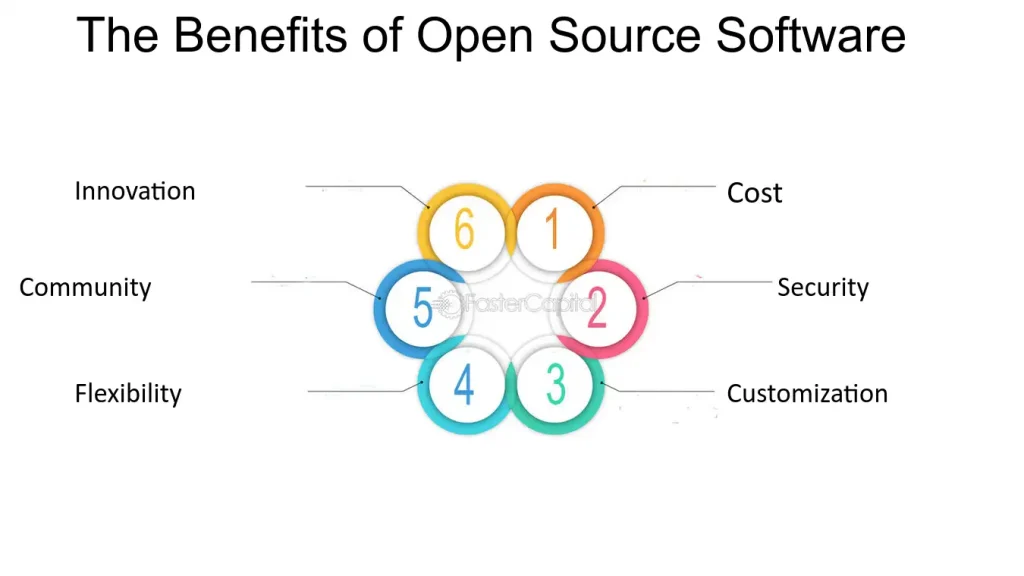

Navigating the World of Open Source Software: Benefits and Risks
Open Source Software: Introduction
The term open source software has been gaining relevance in the perpetually changing world of technology as it provides a lot of opportunities and at the same time poses some risks. Understanding that this domain is a compilation of complexities is the key for individuals and businesses alike. Let’s explore the open source software landscape.
Understanding Open Source Software
Open source software, or OSS, which is widely known as software with its source code openly offered to be studied, modified, and distributed by anyone is one of the most effective software development approaches. The latter is an open source license, which permits users to obtain and alter the source code at any time. This partnership strategy encourages creativity and status quo challenges thus community empowerment.
The Philosophy of Open Source
In the center of the model for open-source software stands a philosophy that is based on the principles of openness, collaboration, and sharing. Such an ethos, therefore, encourages inclusiveness hence individuals from different backgrounds can also participate and contribute to software development without the limitations of space or the organizations’ walls.
| Benefits | Risks |
|---|---|
| Cost Savings: Open-source software is typically free to use, which can significantly reduce licensing and maintenance costs. | Security Risks: While many open-source projects have strong security measures, some may lack dedicated security teams, leading to potential vulnerabilities. |
| Community Support: Open-source projects often have large communities of developers who contribute code, offer support, and provide documentation, enhancing the reliability and usability of the software. | Lack of Official Support: Unlike proprietary software, open-source projects may lack dedicated customer support, leading to reliance on community forums and documentation for assistance. |
| Flexibility: Open-source software allows users to modify and customize the code to suit their specific needs, offering greater flexibility compared to proprietary alternatives. | Compatibility Issues: Integrating open-source software with existing systems may sometimes lead to compatibility issues with other software or hardware components. |
| Transparency: The open nature of the source code allows users to inspect, audit, and verify the software, fostering transparency and trust. | Fragmentation: The decentralized nature of open-source development can sometimes lead to fragmentation, with multiple versions of the software and varying levels of compatibility between them. |
| Innovation: Open-source projects often foster innovation by encouraging collaboration and sharing of ideas among developers, leading to rapid improvements and new features. | Quality Control: While open-source software undergoes peer review, the quality of code contributions may vary, potentially leading to inconsistencies or bugs in the software. |
| Vendor Independence: Users of open-source software are not tied to a specific vendor, reducing vendor lock-in and providing greater freedom of choice. | Uncertain Roadmap: The direction and future development of open-source projects may be less predictable compared to proprietary software, leading to uncertainty about long-term support and updates. |
Benefits of Open Source Software

Open source software comes with several advantages and so it is a good option for developers, businesses, and users.
Cost-Efficiency
It can be noted that open source software is highly cost–effective compared to traditional methods. Because the source code is completely free, the software can be downloaded, installed, and used without any licensing charges. This type of pre-purchase arrangement significantly lowers the initial costs, which is very advantageous for new ventures and small sized businesses with limited financial resources.
Flexibility and Customization
The open source software is the only one that reveals the code and gives you the freedom to make any changes to it so it can be custom-made to address your specific needs. Whether it is adopting the existing ideas of features or creating new functions, the open nature of the code allows users to personalize the software to completely suit their needs.
Community Support and Collaboration
Open-source community is a blessing to developers and users in the form of an asset as it provides them with the resources such as information and tutorials. The collective of contributors allows you to connect with other users, share their thoughts, and work together on projects thus encouraging innovation and problem solving.
Security and Reliability
Contrary to the general misconceptions the open-source software is frequently as strong on security features as the closed-source software is. Transparency of the code represents a high level of trust to the developers worldwide. As a result, the code is being consistently checked for potential vulnerabilities and bugs, which are taken care of in due time. Furthermore, cooperation between the community members makes it possible to quickly spot security risks, thereby increasing the level of trust in the software.
Risks Associated with Open Source Software


Along with the many advantages, open source also has some drawbacks that anonymous users need to pay attention to.
Dependency and Support Challenges
Employing open-source rather than commercial software may involve the need for the community to support and maintain the software. In some cases, some projects might be canceled and lack proper support, in that way, users will have software that does not work or is not supported. This dependency can result in difficulties, especially for businesses that involve more complex applications as has been indicated.
License Compliance and Legal Issues
Open-source licenses’ often complex characteristics can as well be quite challenging to navigate, and different licenses may impose different requirements and limitations. Failure of commitments to licensing terms can lead to legal remedies, including lawsuits and problems of compliance. Complying with the licensing terms is paramount in managing legal risks related to open-source technologies.
Security Vulnerabilities and Patch Management
Open source software is also a teamwork, but at times security flaws may also occur. The decentralized nature of many projects in open source will lead to slow or incomplete patching processes resulting in open systems being exploited. One of the most important security measures, which involves timely updates and threat evaluation, is to be proactive against such risks.
Fragmentation and Compatibility Issues
The open-source software environment comes with a risk of disintegration or lack of compatibility issues. Integrating several open-source components or moving between different projects might produce compatibility problems, which in turn bring in the front issues related to inefficiency and operational complexity. By using delicate assessment and matching test, we will be able to tackle these issues in an efficient way.
Summary
Open source software has a combination of advantages and disadvantages. Therefore, it is very important to weigh the benefits against the risks and make an educated decision that is determined by one’s situation and personal preferences. By realizing the distinctions about open source software and getting the issues in advance, the risk associated with the use of open source software can be reduced along with the advantages of the open source being utilized. Visit CGit to learn more about technology. Try attendezz for employee management system with QR code.
FAQs (Frequently Asked Questions)
How do I determine if open source software is suitable for my project?
The choice between open-source and proprietary platforms is complex and may depend on project requirements, community support, security considerations, and licensing terms. Researching deep and expert consultation will produce an accurate and objective assessment.
What are the most commonly used open-source licenses?
Some of the most used open source license categories are the GNU General Public License (GPL), Apache License, MIT License, and BSD License among others. The terms of each license and conditions are unique, hence understanding the implications of using open source software of each license is an important step.
Can open source software be used for commercial purposes?
Yes, most open source licenses give the chance of commercial use in the software. While it is necessary to know about the terms of licenses, you also have to review the license terms to comply with the restrictions and requirements, if there are any, related to commercial use.
How can I contribute to open source projects?
The ways that people can contribute to open source projects are many, they can involve programming, documentation, testing, bug reporting, and community participation among others. Searching for projects that will enable you to use your passions and skills and being involved in the organization will be very helpful.
Are there any risks associated with using third-party open-source components?
Indeed, making use of third-party open source libraries in your software may lead to the creation of security vulnerabilities, license compatibility issues, and problems with compatibility. The quality and credibility of the third-party parts should be assessed together with the implementation of strong risk mitigation measures.
What measures can I take to enhance the security of open source software?
Implementing security best practices such as regular updates, vulnerability assessments, code reviews, and secure coding practices can help enhance the security of open source software. Additionally, participating in security-focused communities and collaborating with experts can provide valuable insights and support.



